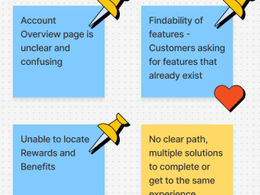

What Our Call Centers Want Us to Fix
I took on a new team in late Spring, 2025. They hadn’t had a manager for about a year because the team was very good at making tactical...
15 hours ago3 min read


Stopping Rework & Scope Creep
Here's one example of how we were able to up-level design and increase productivity at the same time.
Jun 93 min read


Process - Building Infrastructure
One of my key strengths is experience. Having worked on hundreds of projects across industries has given intuition for what is not working and ideas for fixes.
Jun 83 min read


Onboarding - Big Thinking for New Hires
As new folks join our team, I like to give them a strategic assignment to build relationships and provide a fresh set of eyes. Here's an example that drove some key updates to our roadmap.
Jun 82 min read



